Braid Mission
Blog
Musings on Our New Neighborhood

After almost two years of nomadic existence, Braid has secured an office space.
Our nomadic existence was necessary, as necessary as it was for the Hebrew people after they left Egypt. During that extended period of time, Israel was able to transition from seeing themselves as a people enslaved in a foreign land and instead, over time, learn to become a people who identified themselves as a nation. In similar ways Rebecca and I had to learn how to leave something behind – in our case the familiar life and role of parish priest – and learn about a new city and a new community and a new work and new wine skins. The wandering was necessary, albeit quite painful at times.
That said, there was a great feeling of relief when we where invited by Lutheran Social Services to sub-lease an office space they had in their building in the Tenderloin neighborhood of San Francisco. I was able and blessed to participate in a joint ministry with the Evangelical Lutherans in Knoxville, Tennessee, and the idea of locating with Lutherans kindled very fond memories of our joint work and mission. So not only were we going to finally settle, which gives one some hope that one’s mission may have some life to it, but we were doing so with folks we love.
We were not strangers to the Tenderloin neighborhood. In those days of nomadic existence, we had passed through quickly a couple of times. And we certainly knew its reputation, but an affordable office is an affordable office in SF.
However, I am not certain I was quite prepared for what has become our daily experience.
I am not going to give a long and detailed history of the Tenderloin: more details can be found in the chapter about the neighborhood in Gary Kamiya’s excellent book, Cool Gray City of Love. The neighborhood seems to have evolved over time from being a place where new arrivals to the city could find an affordable room, serving as a boarding community for the military during World War II, to a place that began to cater to those requiring cheap accommodation alongside the need for alcohol by the bucket in combination with illicit sex, to becoming the neighborhood it is today. That neighborhood continues to offer plenty of single room occupancy hotels alongside the most impoverished of the poor. Alcohol, while found aplenty (there are over 100 liquor stores and bars within the neighborhood), has been joined by the drug trade and the results of that trade.
Kamiya introduces the neighborhood this way: “In the universe of San Francisco, the Tenderloin is the black hole, the six-block-by-six-block area where the city’s urban matter is most intensely concentrated. It is the only part of San Francisco that remains untamed, its last human wilderness. Without the Tenderloin and its radioactive core of junkies, drunks, transvestites, dealers, thugs, madmen, hustlers, derelicts, prostitutes, and lowlifes, this overpriced, increasingly homogenous burg would feel like one of those motel bathrooms that are ‘sani-sealed for your protection.’”
In this description I can’t tell if Kamiya is touting the benefits of the Tenderloin or damning what is happening to the city of SF as a whole. But what he does is aptly describe the color of humanity that is contained within its boundaries. (The boundaries appear to be policed by other citizens. We saw a half-naked – the bottom half was naked – woman nodded off and sprawled across the sidewalk one block outside of the Tenderloin, heading up Nob Hill, which another not-half-naked and very-well-dressed woman was phoning in to the police. The colorful humanity had seeped out of its cage).
Kamiya’s description, while accurate, did not prepare me for my first day in the Tenderloin.
I decided to venture to a hipster coffee shop just within the Tenderloin boundaries, next to UC Hastings. (I wonder if that same woman would call the police if she knew that her world had bled across boundaries and into the Tenderloin). On my way to get a cup of tea, a block away, I had to dodge a man whose projectile vomiting was painting the sidewalk, step over another fellow in a sleeping bag sprawled across the sidewalk while he was ranting something to a demon only he could see, and then upon my return journey with tea in hand had to witness a man defecating on the sidewalk. What made this act most interesting was that he wasn’t squatting as one might expect but instead was standing, bent over, holding onto his ankles while he did his business, as though he was telling the world what he felt about it.
What makes this scene all the more complex is that the Tenderloin actually contains a large concentration of families and children. If one were to visit the Tenderloin Rec Center one afternoon, one would see children in abundance, many of the mothers wearing the traditional robes of Middle Eastern culture. We have mentor teams working in the Tenderloin with youth.
And yet the Tenderloin remains the cistern for the city. And in the short space of three weeks I have come to some conclusions about the neighborhood and the people within, primarily that these are the children of God who play a role for us all. And it is that role that I would like to explore over time. My musings are not particularly about foster youth, although the Tenderloin contains former foster youth who have aged out of the system and are trying to survive in this gold rush city. The Tenderloin also has its share of runaways who hang out in gangs for support. Instead I want to examine, in a cursory way, what this neighborhood says about us, our culture and human nature. Musings upon a neighborhood that has hooked me, already.



